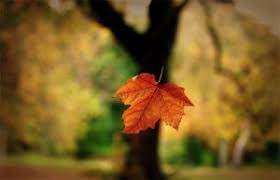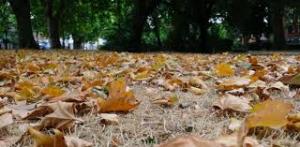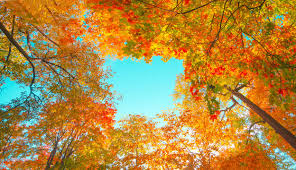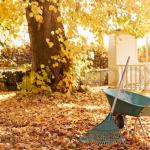
FALL BEAUTY
I loved studying Geography in school and do remember the various climatic belts and zones of the world – Equatorial, Tropical, Temperate, Mediterranean and Arctic. I can still hear my teacher dinning into us that Mediterranean climate had “hot dry summers and cool wet winters!” Temperates, on the other hand, I came to know, had four distinct seasons – spring, summer, autumn and winter.
Living in the tropics, my classmates and I used to joke that we had only 3 seasons: hot, hotter and hottest!
Season Sunset
Learning about the character and nuances of each belt, their effect on vegetation, agriculture, clothing and lifestyle of people in that region, etc., was great.
The temperate zone, especially, intrigued me with its quarterly changes of climate and vegetation. Spring implied new growth and was always depicted as being dressed in light blue skies and light green as well as pale pink and green shoots. Summer was about sowing and planting, and so was glowing in verdant greens, fuscia or vibrant reds and cobalt blue skies as well as seas. Autumn brought harvest and reaping, and was therefore, resplendent in yellows, orange reds and browns. Winter was all about snow and ice coverings and hence, seen to be as covered in sparkling white and frosty skies.
Autumn, I came to know, was a season of colourful leaves and I saw pictures of orange-hued trees, red-leafed glories, and yellow decked splendours. It seemed to me that autumn was the sunset of the day, before the night of winter, while spring and summer were akin to dawn and midday! Autumn fascinated me until I came across a bane of the season – shedding of leaves in preparation for the winter snows!
Fall fact
Leaves fall—or are pushed—off trees by changes in weather and daylight which trigger a hormone that releases a chemical message to each leaf that it is time to prepare for winter. Over the next few weeks, abscission cells form a bumpy line at the place where the leaf stem meets the branch, and slowly, but surely, the leaf is “pushed” from the tree branch.
Autumnal leaf drop is a form of self-protection since, by the end of summer, many leaves are insect-eaten, diseased, or otherwise damaged. Dropping them gives the plant a fresh start in the spring, and the nutrients from the decaying leaves are recycled to help grow the next leafy generation. Also, water in thin leaves expands when frozen causing the tender leaf cells to rupture during the winter, making them useless for photosynthesis in the future. Without dropping these leaves, such a tree would be stuck with thousands of unproductive appendages and no way to make food!

Being stripped of and laid bare of past growth is a necessary blessing, since if left on the tree, the leaves would gain a deposit of snow. This would weigh heavily on the tree that it would be too much for it to bear. Eventually the tree would break down unable to bear the load!
Thus, this winterization process is a must for trees’ survival, for it helps them to survive the winter and grow new leaves in the spring. Autumn leaf fall is essential for new growth and hence, by nature, trees are not in the process of hoarding leaves!
Life flow
In life, whether you notice it or not, we do go through different seasons and changes, a waxing and waning process within our life cycle. It is a pattern of growth cycles that is crucial as well as vital to our well-being and maturing. Every period of living, be it childhood or teen time or early adulthood, middle age or ripe age, each carry with them evidences of the seasons.
We pass through various circumstances and experiences, make choices and decisions, fall and rise with emotions and fortunes, go through gains and losses, make or break relationships, etc. Each of these leave an impact and a residue in us, good or bad depending on the way we respond to them – proactively or reactively!
We often hold on to those memories or victories, not letting go of them and keep either harking back to them or referring to them all the time. The reverse happens with bad remembrances or failures – we ignore them or push them to the back of our mind.
In one case we revel in them and become preoccupied with them, while in the other, we shut them up or barricade our minds from dealing with them. Both these scenarios are not conducive to growth, for in the case of the former we are not moving on, while with the latter, darkness covers our thinking and since we are blocking them, our mind cannot operate at an optimum level.

Scripture constrains
In the Bible, we read in Revelation chap 4 that the twenty-four elders before the throne of God, fall down on their faces and lay their crowns at it His feet. We need to lay our conquests and triumphs in His presence and let go of them, so that are heads become bare for the next crown to be placed on it! As long as we hold on to elapsed glories, our hands are not ready for the next season or time of growth.
Victories have a way of preoccupying us with the glow of achievement and recognition, while defeats and failures tend to do the same, negatively. They discolour our outlook, making everything appear bleak. Every cloud does have a silver lining, every night a dawn, and every autumn or winter a spring!
Letting go
Just as autumn prepares the trees for the comforting blanket of white snows and the hibernation of winter rest in readiness for the bloom of new shoots, so also, we must allow our past victories and defeats to be laid to rest in preparation for fresh starts and novel beginnings. Shedding of stored and accumulated stale stuff is mandatory if we are rise again to new heights and great crests, achieve current targets and reach to the future.
We need to let go so that we may not be weighed down by them nor be too broken to move on!
Life goes on and we must move on too, allowing each season to transform us anew, acquiring different experiences and being refreshed by spring again!

Take a lesson from the season and let autumn come in its full glory!
Let it do its work and beautify your existence!


















